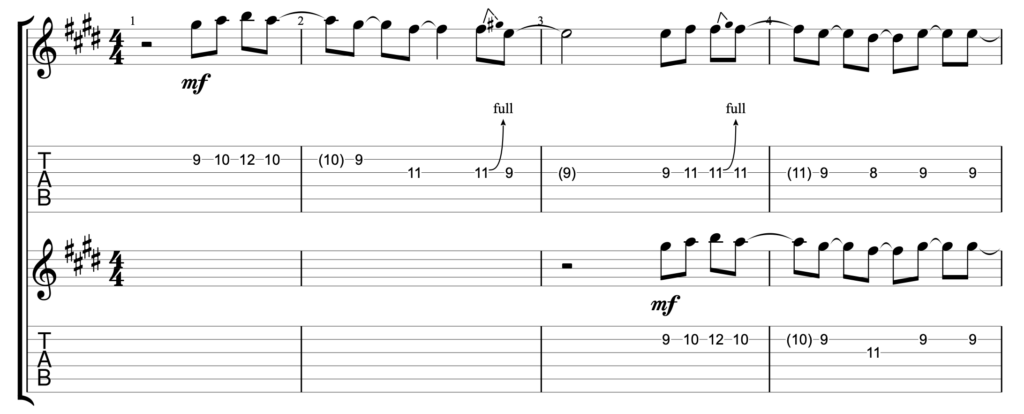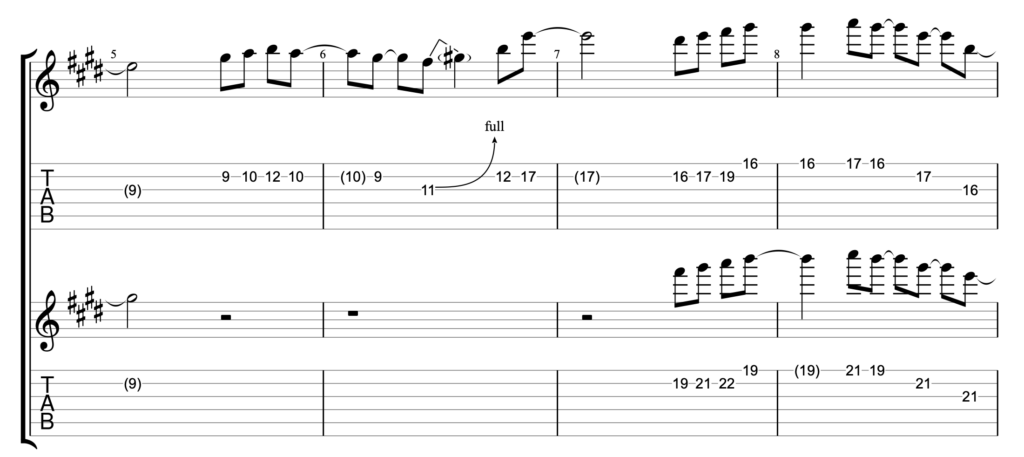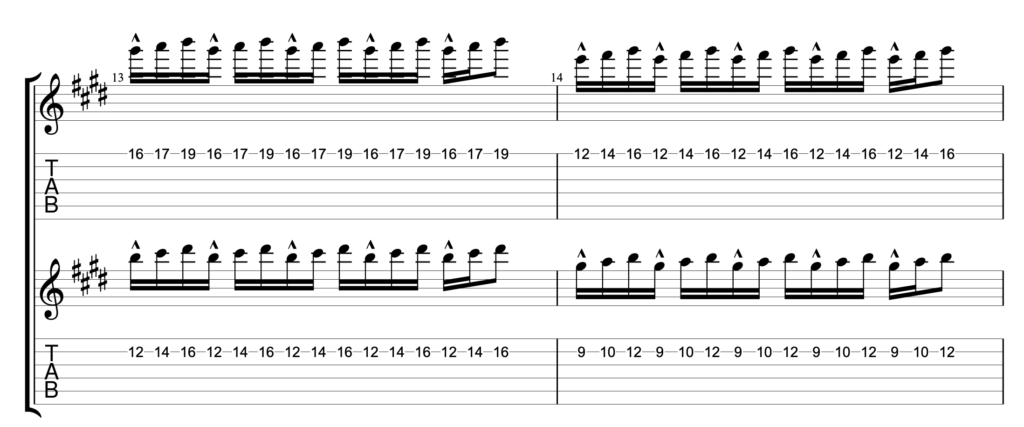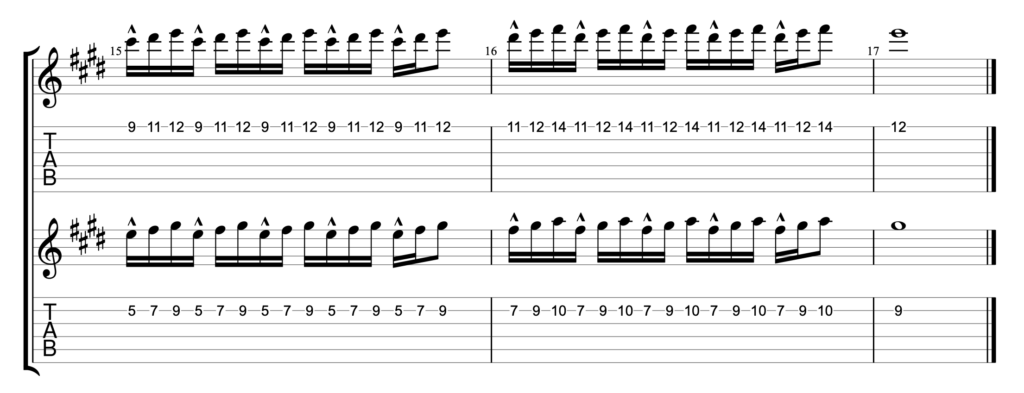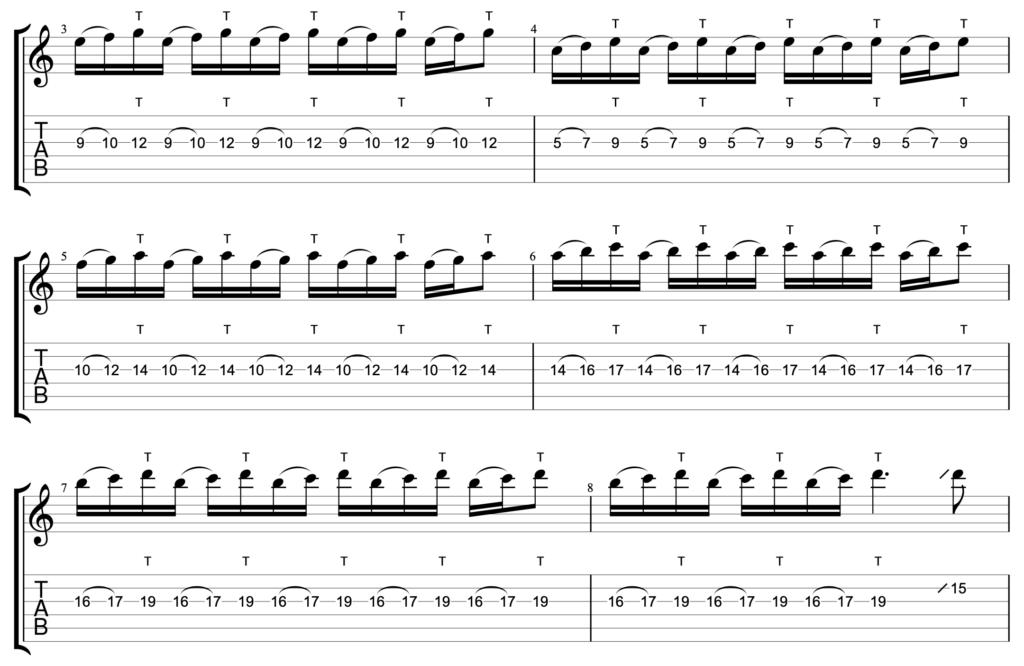Author: Jörn Bögeholz
Unboxing Stau, Grischbeerla, Pantsdown – VLOG #12
Showreel Daniel
Daniel kam auf mich zu und hat mich gefragt, ob wir nicht ein Showreel aus den besten Stellen seines Auftritts mit Lost in Salvation beim Summerblast schneiden können.
Gesagt, getan. Hier seht ihr das Ergebnis:
Lost in Salvation – Summerblast Coburg – 2022
Endlich wider live, endlich wieder Summerblast
Die Jungs von Lost in Slavation haben da wirklich fett abgeliefert!
► Lost in Salvation auf YT https://www.youtube.com/channel/UC658Zjsp1GBV1c9utfI9bzg
Gear I use for videos (Affiliate Links):
► Manfrotto Flex arm https://amzn.to/2DfTlPr
► Manfrotto Superclamp https://amzn.to/38CM2gD
► Neewer Smartphone clamp https://amzn.to/3edLezD
► Falcon Eyes RX-8TD https://amzn.to/34RsMKm
► amazon Basic light stand https://amzn.to/3eHrqWU
► Rode SmartLav+ https://amzn.to/2AFohri
► Rode SC1-Kabel https://amzn.to/376Fmqi
► Rode SC6-L Audio-Splitter TRRS zu Smartphone https://amzn.to/2zUxMmv
Danish Spring – Level Up! (deutsch)
Bedeutung
Wißt ihr wie sich ein Frühling in Dänemark anfühlt? – Ich auch nicht
Akkorde, Akkorde, Akkorde
Harmonische Analyse:
Dazu schreibe ich die Akkorde nochmal nebeneinander und ergänze in den Zeilen darunter die Terzen und Quinten:
Akkord | Fis | H | G | D | A | Terz | Ais | D | H | Fis | Cis | Quinte | Cis | E | D | A | E |
Nun sortiere ich die Töne der Reihe nach: H Cis D E Fis G A Ais
Ihr seht, wir haben ein kleines Problem, weil A und Ais zusammen vorkommen, d.h., wir können die Tonart nicht 100%ig festlegen.
Es könnte sowohl natürlich Moll (A) als auch harmonisch Moll (Ais) sein.
Hm, was tun wir jetzt? Wir entscheiden uns für natürlich Moll und bringen nur das Ais, wenn der Fis-Dur Akkord kommt. Done!
Takte 1 bis 4
Wir starten mit einem F#-Dur-Arpeggio am 9. Bund und spielen zum Zielton D (Terz von Hm) in Takt 2.
Dann bringen wir wieder einmal schön Synkopen. Zieltöne sind G und D (Grundton und Quinte von G-Dur),
sowie Fis und G (Terz und Quarte von D-Dur), sowie Cis (Terz von A-Dur).
Takte 5 bis 8
Wir wiederholen das Thema aus Takt 1 und 2, peppen den Zielton D aber mit einem Triller auf (schnelles Hammer-On / Pull-Off).
Dann Spannungssteigerung durch 12. Lage. Zieltöne D wie gehabt und E (Quinte von A-Dur).
Takte 9 und 10
Ein paar geschmeidige Bendings über Fis-Dur mit den Zieltönen Fis und Cis. Über H-Moll spielen wir dann Fis und D.
Takte 11 und 12
Dann Alternatepicking mit der kompletten H-Moll-Tonleiter.
Takte 13 und 14
Triolisches Sweep-Picking mit Fis-Dur-Arpeggio, und ein kleiner Lauf mit Zielton Fis.
Takte 15 und 16
Dann geht es triolisch weiter mit H-Moll abwärts bis zum Zielton H in Takt 16.
GuitarPro
Download GuitarPro Datei Danish Spring
Ihr habt noch kein GuitarPro?
Ich würde mich freuen, wenn ihr es über den Amazon oder Thomann-Affiliate-Link kaufen würdet:
Guitar pro Version 8 (Amazon Affiliate)
Guitar Pro Version 8 (Thomann Affiliate)
Bock auf mehr?
Danish Spring – Level Up! (english)
This article is part of the series “Level Up! – 42 guitar solos for a better sex life”
Meaning of the Solo
Do you know how spring time in Denmark feels? – Neither do I
Tonal analysis
Harmonic analysis: For this, I write the chords again side by side and add the thirds and fifths in the lines below:
Akkord | F# | B | G | D | A | Terz | A# | D | B | F# | C# | Quinte | C# | F# | D | A | E |
Now I sort the tones in the order of their occurrence: B C# D E F# G A A A#
You see we have a little problem because A and A# occur together, so we cannot determine the key to 100%.
It could be a natural minor (A) as well as a harmonic minor (A#). Bummer, what do we do now?
We choose a natural minor and only bring the A# when the F# major chord comes in. Done!
Bars 1 to 4
We start with an F# major arpeggio at the 9th fret and play to the target note D (third of Bm) in bar 2.
Then we bring in some nice syncopation again. Target notes are G and D (root and fifth of G major).
As well as F# and G (third and fourth of D major), and C# (third of A major).
Bars 5 to 8
We repeat the theme from bars 1 and 2, but spice up the target tone D with a trill (fast hammer-on/pull-off).
Then we increase the tension with the 12th position. Target notes D as before and E (fifth of A major).
Bars 9 to 10
A few smooth bendings over F# major with the target notes F# and C#, over B minor F# and D.
Bars 11 to 12
Then alternate picking with the complete B minor scale.
Bars 13 to 14
Triolic sweep picking with F# major arpeggio, and a small run with target F#.
Bars 15 to 16
Then it continues in triplets with B minor down to the target note B in bar 16. And that’s it
Guitar Pro
Download GuitarPro file Danish spring
Don’t own a copy of GuitarPro yet?
I’d be very happy if you buy it via one of my affiliate link:
Guitar pro Version 8 (Amazon Affiliate)
Guitar Pro Version 8 (Thomann Affiliate)
Want more?
Crapping on your Throne 2. Stimme – Level Up! (deutsch)
Dieser Artikel ist Teil der Serie “Level Up! – 42 Gitarrensoli für ein besseres Sexleben”
Vielleicht habt ihr es schon gehört, dass im Solo noch eine zweite Lead-Gitarre versteckt war.
Hört noch mal rein:
Jetzt fragt ihr euch sicher, wie man zu einer Melodie noch eine zweite Stimme hinzufügen kann.
Die einfachste Methode eine gutklingende zweite Stimme zu basteln, ist das Harmonisieren mit diatonischen Terzen.
Ok, eine Terz ist also ein Intervall mit 3 (kleine Terz) bzw. 4 (große Terz) Halbtönen Abstand zum Grundton.
Gut, nur wann nehme ich 3 Halbtonschritte und wann 4?
Das versteckt sich im Wort “diatonisch” Terzen: tonleiter-eigene Terzen.
Wir sind immer noch in E-Dur, somit können wir die Terzen eindeutig bestimmen.
Unsere Melodietöne in Takt 3 und 4 sind e, f# und d#; die dazugehörenden Terzen g#, a und f#.
Die zweite Stimme sieht dann so aus:
Gut, das Konzept wenden wir aber sparsam an. Wir fügen nur in Takt 3 / 4 und in Takt 7 / 8 die zweite Stimme dazu.
Wenn man das durchgängig macht klingt es sonst oft zu künstlich.
Um noch ein bißchen Pfeffer in die Suppe reinzuhauen, kommt noch eine zweite Stimme auf die letzten vier Takte.
Da wir aber in der Hauptstimme schon extrem weit nach oben auf dem Griffbrett gegangen sind, kommt die zweite Stimme nicht drüber, sondern drunter.
Ihr spielt einfach die Terzen eine Oktave tiefer und schon ist der Drops gelutscht.
Takte 13 bis 14
Takte 15 bis 16
Backing Track
Video
GuitarPro
Download GuitarPro Datei Crapping on your throne
Ihr habt noch kein GuitarPro?
Ich würde mich freuen, wenn ihr es über den Amazon oder Thomann-Affiliate-Link kaufen würdet:
Guitar pro Version 8 (Amazon Affiliate)
Guitar Pro Version 8 (Thomann Affiliate)
Bock auf mehr?
Crapping on your Throne Harmonization – Level Up! (english)
This article is part of the series “Level Up! – 42 guitar solos for a better sex life”
Maybe you have notices that there is a second lead guitar in the Crapping on your Throne solo
Take a listen again
Now you might ask yourself how to add a second guitar voice to a melody.
The easiest way to create a good sounding second voice is to harmonize with diatonic thirds.
Ok, so a third is an interval with 3 (minor third) or 4 (major third) semitones distance to the fundamental.
But when do I take 3 semitone steps and when do I take 4?
This is hidden in the word “diatonic” thirds: scale thirds.
Since we are still in E major, we can clearly identify the thirds:
Our melody notes in bars 3 and 4 are E, F#, and D#; the corresponding thirds are G#, A, and F#.
The second voice then looks like this:
All right, but we are applying the concept economically.
We only add the second voice in bar 3 / 4 and bar 7 / 8.
To add a little pepper to the soup, a second voice is added to the last four bars.
But since we have already gone extremely far up on the fingerboard in the main voice, the second voice doesn’t come above but below.
You just play the thirds an octave lower and Bob’s your uncle!
Bars 13 to 14
Bars 15 to 16
Backing Track
Video
Guitar Pro
Download GuitarPro file
Crapping on your Throne
Don’t own a copy of GuitarPro yet?
I’d be very happy if you buy it via one of my affiliate link:
Guitar pro Version 8 (Amazon Affiliate)
Guitar Pro Version 8 (Thomann Affiliate)
Want more?
Voices In My Head – Level Up! (deutsch)
Dieser Artikel ist Teil der Serie “Level Up! – 42 Gitarrensoli für ein besseres Sexleben”
Bedeutung
Stimmen in deinem Kopf – normal
Ihnen zuzuhören – üblich
Mit ihnen zu streiten – akzeptabel
Den Streit verlieren – GROSSES PROBLEM
Tonart
Da die Rhythmusgitarre nur einzelne Töne pickt, müssen wir die kurz sammeln: Auf der D-Saite D E F G A C
Die Töne könnten aus C-Dur oder F-Dur stammen, je nachdem, ob wir B oder H hinzufügen.
Auf der G-Saite G A B C D F
Diese Töne stammen entweder aus F-Dur oder B-Dur, abhängig davon, ob wir E oder Eb ergänzen.
Mit 6 aus 7 können wir noch keinen Tonarten-Jackpot gewinnen, wir müssen uns für eine Tonart entscheiden.
Für den ersten Teil nehme ich C-Dur, bringe also noch das H ins Spiel, für den zweiten Teil ab Takt 9,
nehme ich F-Dur und spiele das E. Da jedoch D und G jeweils das tonale Zentrum sind, können wir auch nassforsch behaupten,
wir spielen nicht C-Dur sonder D-Dorisch, bzw. nicht F-Dur sondern G-Dorisch. Aber das wäre ja fast Angeberei.
Takte 1 bis 8
Mit einer kleinen Tapping-Action geht es in den ersten Teil des Solos.
Accent Shifting heißt hier das Zauberwort, weil wir Dreiergruppen auf gerade Sechzehntel spielen.
Die Betonung verschiebt sich damit immer weiter nach hinten, bis wir nach fünf Wiederholungen wieder auf einer schweren Zählzeit landen.
Tonal ergibt sich aus den Tönen der Rhythmus-Gitarre und den Arpeggios folgendes:
Takt 1: D + D E F -> Dm9
Takt 2: F + A H C -> F#11
Die Takte 3 bis 8 sind ähnlich aufgebaut.
Takt 3: C + E F G -> Cadd11
Takt 4: A + C D E -> Aadd11
Takt 5: D + F G A -> Dadd11
Takt 6: F + A H C -> Fadd#11
Takt 7: G + H C D -> Gadd11
Takt 8: wie Takt 7
Takte 9 und 10
Hier geht es mit einem kleinen Lick über zwei Saiten in den zweiten Teil des Solos.
Takte 11 und 12
Spannung steigern mit Sechzehnteln.
Takte 13 und 14
Diese Takte sind einfach eine Wiederholung von Takt 9 und 10; allerdings müssen wir vom letzten Ton in den ersten Ton von Takt 15 sliden.
Takte 15 und 16
String Skipping at its best. Mit kleinen Slides aufgepeppt, landen wir stilsicher in unserem Zielton, dem D.
GuitarPro
Download GuitarPro Datei Voices in my Head
Ihr habt noch kein GuitarPro?
Ich würde mich freuen, wenn ihr es über den Amazon oder Thomann-Affiliate-Link kaufen würdet:
Guitar pro Version 8 (Amazon Affiliate)
Guitar Pro Version 8 (Thomann Affiliate)
Bock auf mehr?
Voices in my Head – Level Up! (english)
Meaning of the Solo
Voices in your head – normal
Listening to them – common
Arguing with them – acceptable
Losing the argument – BIG PROBLEM
Tonal analysis
Since the rhythm guitar only picks single notes, we have to collect them shortly:
On the D string D E F G A C
These notes could be from C major or F major, depending on whether we add B flat or B flat.
On the G string G A B C D F
These notes could be from either F major or B flat major, depending on whether we add E or B flat.
With 6 out of 7 we can’t win a key jackpot yet: we have to choose a key.
For the first part, I take C major, so I still bring the B into play, for the second part from bar 9,
I take F major and play the E.
But since D and G are each the tonal center, we can also say that we don’t play C major but D Dorian,
or not F major but G Dorian. But that would almost be showing off.
Bars 1 to 4
With a little tapping action, we enter the first part of the solo.
Accent Shifting is the magic word here because we play groups of three to even six- tenths.
This shifts the emphasis further and further back until, after five repetitions, we end up on a difficult count again.
Tonally, the following results from the tones of the rhythm guitar to the arpeggios:
Bar 1: D + D E F -> Dm9
Bar 2: F + A B C -> F#11
Bar 3: C + E F G -> Cadd11
Bar 4: A + C D E -> Aadd11
Bar 5: D + F G A -> Dadd11
Bar 6: F + A B C -> Fadd#11
Bar 7: G + B C D -> Gadd11
Bar 8: same as bar 7
Bars 9 to 10
Here it goes with a little lick over two strings into the second part of the solo.
Bars 11 to 12
We increase tension with sixteenth notes.
Bars 13 to 14
These bars are simply a repetition of bars 9 and 10, but we have to slide from the last note into the first note of bar 15.
Bars 15 to 16
String Skipping at its best. Pimped up with little slides, we land in our target tone, D. Bravo!
GuitarPro
Download GuitarPro file Voices in my Head
Don’t own a copy of GuitarPro yet?
I’d be very happy if you buy it via one of my affiliate link:
Guitar pro Version 8 (Amazon Affiliate)
Guitar Pro Version 8 (Thomann Affiliate)







